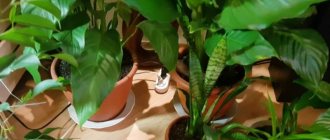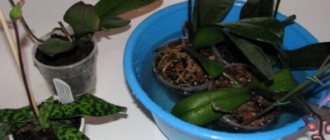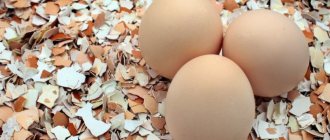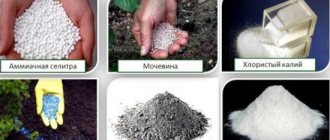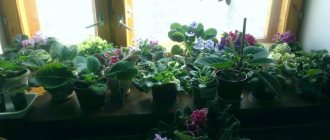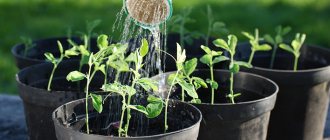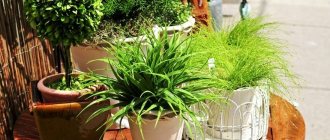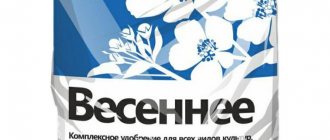One of the best fertilizers is boric acid for indoor plants.
The plant receives nutrients from water, air, and soil. But it is the soil that directly affects the health of indoor flowers. It contains important trace elements, one of which is boron. A deficiency of this substance can have dangerous consequences.
Using boric acid for indoor plants
The drug belongs to the class of inorganic microfertilizers. It is obtained by acid processing of natural minerals. The powder is highly soluble in water, easily passes into the soil solution, and is absorbed by the green mass. It is used as a key component of complex fertilizers for root and foliar feeding, pre-treatment of seeds, bulbs, cuttings.
Beneficial features
The main task of boron is to ensure high-quality growth and development of the flower. It stimulates metabolism, nitrogen synthesis, and chlorophyll production. As a result, the roots receive a full amount of oxygen and calcium.
Fertilizer is an active participant in the formation of new shoots, buds, and flowers. The plant acquires a powerful leaf apparatus, a healthy root system, and prepares for abundant flowering. Preventative spraying increases resistance to adverse conditions.
- rapid germination of seeds, bulbs, cuttings;
- increasing the volume of chlorophyll, stabilizing the synthesis of phytohormones - all this ensures the growth and development of indoor plants;
- recovery after transplantation, successful rooting of “babies”;
- stimulation of the formation of new growth points, roots, shoots, flowers, ovaries;
- strengthening stems and green mass;
- stopping putrefactive, bacterial lesions;
- anti-stress, adaptation to environmental factors;
- complete absorption of calcium and oxygen by the roots.
For which house flowers should I use?
The fertilizer is suitable for feeding any indoor plants. The main thing is to recognize a microelement deficiency in time.
Use for processing:
- Cyclamena (Umbrella, Lulu, Rococo, Aurora, Victoria, Green Ice, Silver).
- Orchids (Vanda, Miltonia, Cambria, Cattleya, Phalaenopsis, Oncidium, Lady's slipper, Brassia).
- Begonia (Royal, Metallica, Bauer, Mason).
- Pelargonium (Orange, Ice Rose, Iris, Mini Diana).
- Hibiscus (Copper King, Cranberry Crush, Old Yella).
- Anthuriums (Jolie pink, Zizou, Lilly, Semper, Red).
- Indoor roses (Cordana, Prima Ballerina, Curler, Hummingbird, Baby Masquerade).
- Kalanchoe (Fiery, Kalandiva, Degremona, Blossfeld).
- Violets (Zemfira, Sputnik, Austin's Smile, Melody Kimi).
- Ficusov (Benjamina, Starlight, Natasha).
Signs of boron deficiency
It is easy to diagnose a mineral deficiency - just carefully examine the flower. Most often this occurs due to an unbalanced soil composition. The plant starves in acidic soils. The reasons for a decrease in the amount of boron may be excessive watering, incorrect application of organic matter, or NPK fertilizing.
Growth slowdown
Microelement deficiency can be recognized by sluggish apical shoots that turn pale due to lack of photosynthesis. They suffer especially severely, even to the point of dying. A long-term lack of boron leads to a complete cessation of growth and development.
- the growth point is affected, the flower begins to develop with the help of side shoots;
- the appearance of young foliage abruptly stops;
- the plant freezes due to a weak root system.
Poor condition of leaves
Boron deficiency is manifested by a change in the cellular structure, an increase in the walls of the leaf blades.
- the top of the plant suffers, signs of chlorosis begin to appear, the color changes to light green followed by yellowing;
- degradation of the interveinal space is clearly visible;
- finely spotted mosaic bleaching is observed throughout the green mass. The veins, on the contrary, darken and may become black;
- the plates become brittle and break when bent. They curl into a horizontal tube. They often thicken, become denser, and die.
No flowering
Another symptom is deformation of the ovaries. The flowers that have already appeared fall off. The formation of new ones stops. The buds do not form at all or quickly fall off. The plant looks withered and tired.
Proportions for breeding
The drug is used carefully, with maximum caution. Carefully calculate the proportions before adding boric acid. An overdose can cause the death of the flower.
- 0.2 g/l - preparation of planting material (soaking bulbs, cuttings, seeds);
- 0.5 g/l - foliar feeding (spraying);
- 1g/10 l - root feeding (introduction into the soil mixture).
Methods of application as fertilizer
Boron deficiency cannot be compensated for by one-time feeding. Fertilizers based on it are used not only in spring, but throughout the entire growing season.
Clean solution
The drug is used to treat seeds, bulbs, and cuttings of indoor plants before planting. This will increase the growth factor and the quality of young shoots. Prepare a solution at a dosage of 0.2 g/l. Dissolve the powder in water with continuous stirring. Soak the seed for 12 hours.
To enhance the effect, use a complex of microelements:
- 0.1-0.3 g boric acid;
- 0.5 g zinc sulfate;
- 1 g potassium permanganate;
- 1 g molybdenum;
- 0.5 g methylene blue;
- 0.5 g of copper sulfate.
The multimineral composition is diluted in a liter of water. The planting material must be completely immersed in the solution. When processing is completed, it is dried and planted.
Spraying
Wetting the green mass leads to abundant and long-lasting flowering. Increases resistance to diseases, pests, unfavorable and stressful growth conditions. Carry out the first wetting in the budding phase, the second - at the peak of flowering, the third - 2 weeks after it.
- Add 5 g of powder to 10 liters of water or use a proportion of 0.5 g/1 liter.
- Pour the composition into a spray bottle and wet the sheet plates on both sides. Clean them from dust first. Irrigate foliage in the evening or on a cloudy day. Otherwise, the plant will suffer from burns.
Top dressing
Adding fertilizer to the soil is effective for flowering plants. It is carried out rarely, once every 3 years, when signs of boron deficiency are visible.
- moisten the soil to avoid root burns;
- prepare a solution based on 10 liters of warm water and 1 g of powder. To ensure complete dissolution, first dilute the granules in hot water, then bring the amount to the specified volume;
- water the plant;
- place the pot in a sunny place - fertilizing will stimulate nitrogen production, and ultraviolet deficiency will negatively affect subsequent growth.
Don't forget to add fertilizer to the soil if you plan to plant seedlings or seeds. Water the soil with a watering can, loosen it and use it for its intended purpose.
Table 1. Regulations for introducing boron fertilizers into the soil
| Boric acid | 0.8-1.2 g/sq.m |
| Borax | 1.5-2 |
| Boric superphosphate | 2-2.5 |
| Boron-datolite fertilizer | 1.5-2 |
Expected effect
3-4 days after feeding, the plant comes to life. The green mass acquires a healthy, rich color. The stems become stronger. Growth and development are restored, normalized.
Boric acid unlocks the potential of flowering indoor plants. Fertilizer ensures lush and long-lasting flowering. By the end of the growing season, the flowers go into rest strong, prepared, and are less likely to suffer from pests, rot, bacterial, and viral infections. Successfully withstand adverse environmental conditions.
Precautionary measures
The substance belongs to hazard class IV, which means it does not cause harm if it comes into contact with exposed skin. But powder particles can enter the body through the respiratory tract, so prepare the supplement while wearing a mask. Avoid contact of the solution with damaged skin (wounds, scratches). Make sure that children and animals do not take the acid inside. If this happens, consult a doctor immediately.
Reviews
According to reviews from gardeners, as a result of the use of boric acid in gardening and horticulture, improvements can be achieved:
- seed germination;
- faster rooting of seedlings;
- the course of metabolic and photosynthetic processes;
- synthesis of chlorophyll and nitrogenous substances;
- enhancing flowering, fruit set and growth.
Boric acid also increases productivity and promotes the accumulation of sugar, vitamin C and carotene in fruits.
Plants become more resistant to fungal diseases and can more easily withstand unfavorable weather factors, heat, cold, poor watering or lack of light.
Fruits collected from plants treated with boron are stored longer and resist rot much better. In addition to feeding, the substance is used to effectively expel ants and woodlice from beds.
Why do you need boric acid for indoor flowers?
Boron is one of the necessary and important microelements for the normal development of all crops, including indoor flowers. There is little of it in the soil, and even then the chemical is quickly washed out. Therefore, boric acid for indoor plants is often applied as a separate fertilizer. Why is this necessary and how to use the drug correctly?
How boric acid works on indoor flowers
The use of boric acid has a positive effect on plants at all stages of development, namely:
- seed germination increases with the seedling method of cultivation;
- seedlings adapt faster after picking;
- growth processes are activated, flowers begin to actively branch and grow additional roots;
- The quality of flowering improves and the number of buds increases.
Boric acid is also an excellent antiseptic. It protects flowers from many diseases and increases their resistance to temperature changes.
Signs of boron deficiency in plants
You can determine that window-sill green pets are deficient in boron and need feeding by the following manifestations:
- the tops of the plants seem to freeze and stop their growth, while side shoots can continue to form;
- the leaves become pale, yellowish, especially the upper ones, and in geraniums they even turn white;
- young leaves initially grow irregularly shaped, curl and are very fragile;
- the inflorescences fall off without opening, or the buds are very small.
If you do not react in time, the flowers may disappear altogether. First, the top of them dies off, and then all the stems.
Boric acid for indoor plants: application features
Fertilizing flowers with boron can be done by the root or by the leaf. In both cases, it is important to observe the dosage of the drug, because an excess of boron causes burns. At the same time, it is unlikely that it will be possible to save the plant - leaves with burns die off.
Boric acid comes in the form of small granules that are poorly soluble. To prepare the working solution, use only slightly hot water in a small amount. Then you just need to add cold water and bring the solution to the desired proportion.
For foliar feeding, you need to dissolve 0.5 g of the drug in 1 liter of water and spray the plants. 2-3 treatments are enough before flowering begins. You can also add a little granules to the soil when planting, but be sure to mix it well with the soil. Violets and geraniums are especially fond of boron additive.
How to make a combined flower food with boric acid, potassium permanganate and iodine - video
Form, composition
Externally, the acid is transparent granules or powder without a distinct color or odor, poorly soluble in cold water. Under natural conditions, it can be extracted in an unbound form.
Boric acid is part of some minerals, for example, colemanite, boracite, borax. Boron is also present in sea water. In addition, any plant cell contains it in its composition.
In addition to boric acid, there are other fertilizers containing boron:
- borax, or acid salt, is used for spraying;
- Boric supersulfate is used as a top dressing.
Feeding indoor flowers with boric acid
An effective and at the same time inexpensive fertilizer for house plants is boric acid. It is saturated with boron - an element necessary for the healthy development of any crop. In order for the product to be effective, it must be used according to certain rules.
The effect of boron on plant growth and development
Although the need for boron in indoor flowers is small, even this necessary microdose is an important element in the physiology of the plant organism. Boron has a positive effect on many processes in the development of indoor flowers. It is an effective adaptogen (a drug that can increase a crop’s resistance to harmful influences) and a growth stimulant. The benefits of applying it in the correct amount to houseplants are manifold:
- stimulates faster seed germination;
- helps strengthen the walls of the stem;
- participates in the formation of plant reproductive organs;
- increases the number of new growth points of stems and roots;
- after planting seedlings in a permanent place of growth, it promotes their rapid adaptation;
- enhances crop resistance to sudden temperature changes and attacks of harmful insects.
There are special boron-based fertilizers used in large-scale gardening. For indoor floriculture, the optimal preparation is boric acid. It contains a fairly high concentration of the element. In the soil, especially calcareous, sandy and acidic, there is not enough boron, and even after accumulating in old plant tissues, it does not migrate to young ones, therefore for the normal development of house plants it is necessary to regularly add it in the form of fertilizer or foliar feeding.
It should be borne in mind that even with a sufficient concentration of boron in the soil, plants may absorb it poorly due to prolonged drought or prolonged excessive moisture, too intense lighting or an abundance of potassium and nitrogen fertilizers.
Signs of boron deficiency in indoor flowers
Element deficiency can be determined by specific signs in the appearance of plants:
- chlorosis of the leaves develops - they become pale and at the same time hard and fragile;
- the shape of the leaf plates changes - their asymmetry, ugliness or underdevelopment appears;
- growing points begin to die off;
- internodes become shortened, and roots become weak and bristly, with an excessive number of lateral processes;
- flowers fall off en masse or do not open;
- Even seedlings with boron deficiency may experience stem necrosis.
Since boron does not pass from old leaves and trunks to young parts of the plant, oppression of the flower begins from the young top. If the necessary measures are not taken, the entire flower may gradually die from a lack of the element.
Stopping growth
Boron starvation causes the death of growth points, including the apical one. First, chlorosis occurs at the top of the plant (its blanching) and coarsening of the young upper leaves. The flower stops growing, while its lower branches and leaves, which have accumulated a sufficient supply of the element, may look quite healthy.
Some crops, after the tops die off, begin to branch, but in general, due to boron starvation, the flowers look depressed and withered.
Condition of the leaves
Boron plays an important role in protein and carbohydrate metabolism; its deficiency in plants leads to the accumulation of ammonia nitrogen and sugars, which is accompanied by the death of buds, as well as a change in foliage color. The upper shoots with leaves suffer more than the lower ones, even to the point of falling off. Since the apical growth point ceases to exist, the flower continues to develop with lateral processes.
Changes in the appearance of leaf plates, especially the upper and young ones, caused by the lack of an element, are noticeable even to a novice gardener:
- they become convex and bend downward . The leaf tissue wrinkles and shrinks along the veins. The seals are shaped like spots. Then the leaves are rolled into tubes;
- the color becomes light green (sometimes a mosaic pattern, or finely spotted lightening, appears on the leaves). Some plants, such as geraniums, may have leaves that turn completely white;
- gradually or a border of dead tissue appear along the edges of the leaf blades
- the veins darken , harden, and become brittle when bent;
- deformed leaves fall prematurely, leaving bare shoots.
Bloom
Adding boron to the soil during the flowering period of plants has a positive effect on the quality of pollen (pollen tubes in flowers increase). A typical deficiency of the element is the lack of flowering or falling of buds and flowers, failure to set fruit. The flowers become smaller, and the buds that set have a pale color.
Preparations based on boric acid and their use
Almost all boron-containing fertilizers are produced using boric acid. They are used in various ways:
- acid and borax powder are used directly for foliar feeding and pre-sowing seed treatment;
- bornadotalite fertilizer is applied to the soil separately or as part of dry fertilizer mixtures;
- complex dry and liquid fertilizers are especially convenient for use in home floriculture. In addition to boron, they are enriched with many other microelements necessary for plants, are quickly absorbed by them and act effectively.
Behavior on soils
Mag Bor brings the greatest benefit to acidic soils, helping to reduce soil acidity. Since the microelement boron is prone to weathering and leaching, its use on light sandy and sandy loam soils will be the most appropriate and profitable from an economic point of view.
Soils on which nitrogen fertilizers have been used for a long time have a more acidic composition. At the same time, it is difficult for plants to absorb nutrients, especially magnesium, potassium, and calcium.
The lower the pH value, the more toxic the nutrients become to garden crops. If you constantly grow crops in one place, calcium, magnesium and boron are removed from the soil by plant nutrition. This acidifies the soil even more.
The main problem in acidic soils is phosphorus deficiency. This element binds with aluminum and iron, forming insoluble compounds that the plant cannot use for nutrition. As a result of phosphorus deficiency:
- the root system is poorly formed;
- the absorption of nitrogen and potassium is impaired;
- metabolism is disrupted, as a result of which productivity decreases.
The acid-base balance can be partially corrected by using Mag Boron.
Fertilizer improves the nutritional value of fruits and protects vegetables from core rotting. This is especially true for all types of beets and potatoes. Appearance and preservation are also increased, which makes it possible to maintain the commercial quality of vegetables and berries after assembly for a long time.
Fertilizing plants with boric acid
Boron for plants is an important component for growth, as it is involved in photosynthesis and the synthesis of microelements. Boric acid is a low-cost fertilizer; it is actively used to provide plants with the most important microelement - boron. In appearance, it is a powder that does not have a distinct odor or specific color. It is often used in the garden and at home as a mineral fertilizer. The substance helps to increase the flowering of trees and protect plants from parasites.
Fertilizer Green Belt Boric acid for plant nutrition (10 g)
What are the benefits of boric acid?
Throughout the growing season, boric acid in the garden is an important component necessary for the growth of vegetation. In the case of stem treatment, an increase in the amount of oxygen transported to the rhizome is achieved . The amount of calcium in all parts of the plant also increases, the dosage of chlorophyll in the green mass becomes greater, and the metabolic process is also stimulated.
Main areas of use and benefits of the drug:
- boric acid is often used in cases of planting seeds, as the product increases their germination;
- boric acid in the garden is often used to root seedlings; accordingly, the number of plants that take up and begin to actively develop almost immediately after planting increases;
- when used at the stage of ovary formation, the substance helps to increase the number of useful flowers;
- at any stage of the growing season, acid normalizes the synthesis of nitrogen compounds;
- When fertilizing, the fastest development and strengthening of all plants is ensured.
According to agrochemists, it becomes obvious that with a sufficient amount of boron, the quantity and quality of fruiting significantly increases, crop storage improves and greater resistance to harmful growing conditions is achieved. Plants with a sufficient amount of boron compounds get sick less often and are resistant to infectious diseases, as well as to pests (cockroaches, ants).
Fertilizing plants with boric acid
Signs of boron deficiency in garden and vegetable plants
Boric acid is extremely important in gardening and cannot be replaced with other substances. The lack of this component leads to numerous negative consequences . Externally, its deficiency can be determined by the following characteristics:
- pallor and yellowing of the crown of the plant, especially the foliage;
- irregular shape of new leaves. They become ugly, break easily and quickly wither;
- with a lack of boron compounds, development occurs only in the lateral buds, and the apex does not grow for a long time;
- the onset of necrosis (rot) begins on soft fruits and moves to the stems;
- death of the upper shoots;
- many inflorescences fall off or develop slowly after ovary;
- When growing root crops, fungal scab often occurs;
- If cauliflower is grown, brown rot often appears.
Rules for using acid
Boron ions in plants undergo minimal migration; therefore, when a substance enters a certain place, the acid remains approximately there until it is processed by the plant. Boric acid is used in gardening as a fertilizer to improve the growth and taste of fruits, but if the recommended dose is exceeded, chemical burns may occur .
Rules for using boric acid for plants:
- The procedure is mainly carried out in the form of foliar feeding;
- the product is diluted to the required concentration and sprayed on the plant, but it is important to accurately observe the dose;
- It is recommended to carry out the treatment in the evening, when the temperature drops a little, the sun's rays are no longer so hot, but the air remains warm. You can also spray on cloudy warm days;
Boric acid for plants
It is necessary to spray with boric acid in accordance with the concentration, otherwise chemical damage appears and cannot be cured with other drugs.
The treatment can be carried out even by novice gardeners, since the product does not require a particularly complex application technique. The plant constantly needs a boron compound, but it is worth taking into account poor solubility at low temperatures and the slow migration process . The method of processing in homestead and dacha conditions does not differ from other preparations.
It is recommended to adhere to the standard schedule of use for vegetables, as well as berry and fruit trees - cover 2 times when flowers appear, then another 1 procedure is repeated at the moment the ovary appears. For pome trees, it is recommended to treat 3 times:
- When a bud forms.
- In the process of flowering.
- After the dry flowers fall, when the fruits begin to fill.
Boric acid for indoor plants
Plant protection products Agromaxi Boric acid 20 g (Agromix)
The use of boric acid for indoor plants ensures a strengthened root system and abundant flowering. To achieve a positive reaction, you must adhere to a dosage of 1–1.2 liters of water per 1–1.2 g of product. The water must be heated, otherwise the acid will not be able to dissolve completely . After dilution, foliar treatment of plants is carried out, which promotes the rapid appearance and formation of buds and flower buds. The boron substance is applied by spraying, identical to garden treatment.
The use of boric acid on indoor flowers is carried out until the buds open and the color begins to discard. Regular use is the key to a healthy plant, since boron compounds are required throughout the growing season. Violets need boron most of all (planting is carried out in boron-deficient peat); other plants also need the chemical component, which, when used correctly, respond positively to acid treatment.
Expert opinion on boric acid:
Boric acid is a way to combat chlorosis, inhibition of root development in young seedlings, deformation of fruits, and infertility. Stimulates abundant flowering of indoor crops. Works great as a drug that increases the germination of seed material. Adding boron will increase the amount of ovary on fruit crops. In garden plots it helps fight insect pests.
Boric acid for roses
For roses, a sufficient amount of the compound leads to rapid absorption of calcium and greater bud formation. Before diluting boric acid for roses, you should decide whether other microfertilizers will be used in the complex.
If boric acid is used independently on roses, prepare a 0.1% solution - add 10 g of fertilizer to 10 liters of water. In case of parallel treatment with several fertilizers, it is recommended to use 5 g per 10 l. Spraying is carried out at the stage of budding and the beginning of the appearance of flowers.
When using boric acid to prevent the development of spores, it is recommended to immerse the cuttings in liquid (20 g per bucket of water) for several minutes.
Boric acid for cucumbers
Spraying cucumbers with boric acid
For cucumbers, boron deficiency can be determined by the following symptoms:
- the leaf blade becomes yellow, most often the lesion begins from the edge;
- when ripe, cucumbers have yellowish stripes in a longitudinal direction;
- growth stops;
- the ovaries die.
When fertilizing cucumbers, the technology for diluting boric acid is different. It is worth mixing 5 g of the substance and 2 g of manganese sulfate. The technique works when used in the garden and open ground. An interval of 2 weeks must be maintained between treatments . The product prevents wilting of the ovaries and increases the yield.
When growing cucumbers in a greenhouse, you need to spray with a complex product:
- potassium chloride type (0.5%);
- superphosphate (5%);
- magnesium sulfate (0.1%);
- boron solution (0.03%).
How does it work?
Using the drug increases yield by 30%. Microelement ions move slowly in plants, so they can cause burns to greenery, young roots and stems.
If you regularly fertilize the soil, the quality of depleted sod-podzolic soils improves. Boric acid neutralizes the negative effects of lime, as well as high concentrations of carbonates. The drug is often used in greenhouses to eliminate the consequences of soil disinfection measures with alkali.
The substance does not transfer from old leaves to new ones, so the product must be applied regularly. The microelement accelerates biochemical processes and saturates plantings with nutritional components.
Potato tubers treated with the solution are not affected by scab, and cabbage does not form empty heads of cabbage after spraying. Eggplants and peppers do not have smaller fruits, and cucumbers do not have a yellow border on their skin. If you soak onion seeds before planting, you can easily prevent diseases.
Not all crops benefit from boric acid equally.
According to the degree of need for the drug for plants, they are divided into three groups:
- Cabbage, pome garden trees, beets. They need frequent and regular applications during the growing season - at the beginning of budding, after the petals fall and during fruit formation.
- Vegetables, stone fruit trees, berry bushes. Two applications per season are enough.
- Potatoes, legumes, strawberries, herbs. For these crops, treatments are carried out only when symptoms of deficiency appear, in areas with high lime concentrations.
Application of boric acid for plants
When growing various types of crops, experienced gardeners use different growth stimulants, which allow them to obtain a more abundant harvest without the use of aggressive chemicals. Let us consider in detail this preparation, namely, different options for using boric acid for plants (indoor and outdoor) as a growth stimulator.
What is it and how does it work?
Boric is a weak monobasic acid. In agriculture and everyday life it is used to kill pests and as an antiseptic. It is a crystal-shaped preparation in the form of scales. The drug has no odor at all. Under natural conditions it is part of mineral waters. It dissolves well in water and a number of organic solvents.
Beneficial features
How is boric acid beneficial for plants? At the dacha, it is recommended to use it as a microfertilizer, as a stimulator of fruit formation for various fruit, berry and vegetable crops. It is used in a similar way for flowers. Feeding plants with its solution stimulates the development of small adventitious roots, significantly improving the diet.
Where is it used?
The use of acid is most justified on alkaline and neutral types of soil. Its application is also necessary on acidic and swampy soils. With a lack of boron, plants experience inhibition of development and death of the root system, and a decrease in vascular conductivity. As a result, the supply of nutrients is disrupted and crops begin to lag significantly in growth. The lack of boron is especially severe when there is a lack of moisture.
When adding acid, it is necessary to divide the plants according to their need for boron into 3 large categories.
Table. Boron requirements of agricultural crops
| Degree of need | Garden and vegetable crops |
| High |
|
| Average |
|
| Low |
|
Acid is a low-hazard substance; if the rules of use are followed, it is not dangerous to human or animal health. But if the dosage is significantly exceeded, boron tends to accumulate. An excess of this element in plants is manifested by dome-shaped leaves and chlorosis. Therefore, it is important to strictly adhere to the instructions for use and know how to properly dilute boric acid.
Pest extermination
Experienced gardeners know that acid can be used as an insecticide. Baits based on it act as contact-intestinal poisons. They are used to kill ants and cockroaches.
Attention! The effect of the drug is not observed immediately; poisoning occurs as it accumulates in the body.
The easiest way to use acid is to place it directly where insects move. Various baits are prepared based on the drug.
- Dissolve 5 g of acid in 100 grams of hot water. Add half a tablespoon of honey and 2 tablespoons of sugar to the resulting solution. The syrup is poured into small containers, which are placed in places where ants gather and move.
- Mix 10-15 grams of acid with two egg yolks. Roll the resulting thick mass into pea-sized balls. The balls are placed in places where cockroaches and ants accumulate.
Important! Increasing the percentage of acid in baits does not affect their effectiveness.
Use on horticultural crops
Treatment with boric acid is carried out at the stage of soaking the seed material. The following proportions must be observed: 0.2 g of the drug per 1 liter of water. The seeds are soaked in the resulting solution for 12-24 hours.
Acid can be used as a fertilizer - foliar and root feeding. The first spraying is carried out before budding, the next - during fruiting. Boric acid for spraying plants is diluted at the rate of 0.1 grams per 1000 milliliters of water.
Attention! The drug dissolves in warm water at a temperature of 50-60 °C.
If there is a severe lack of boron, an acid solution is poured under the root. Plants must first be watered with clean water. You can process the following using the methods described above:
On strawberries
With boron deficiency, strawberries begin to bend their leaves and die off the edges of the leaf blades. Acid fertilizing is beneficial for strawberries:
- eliminate the symptoms described above,
- significantly improves the taste of berries,
- increase yield.
The first time strawberries are processed in early spring, a 0.1% solution is prepared. For greater effectiveness, you can add a small amount of potassium permanganate to the mixture; the finished mixture should have a pale pink color. This amount of solution is enough to water 20-25 bushes.
Processing apple and pear trees
For fruit trees, acid is used as a microfertilizer. Boron deficiency in fruit crops can be determined by the following signs:
- leaf thickening;
- warping of sheet plates;
- darkening of veins;
- along rosettes of small leaves at the ends of branches;
- in case of acute deficiency, trees may experience drying of the top;
- The quality of the fruit decreases - dry, corky areas appear on the apple pulp.
To eliminate boron deficiency, trees are sprayed with an acid solution prepared at the rate of 15 g of the drug per 10 liters of water. This treatment provides a significant increase in yield.
For grapes
Grapes, like other crops, may also lack boron. It can be determined by the appearance of interveinal chlorosis and single ovaries in the hands. A young vine experiencing an acute boron deficiency dies within 2 years without appropriate treatments.
To set fruit and eliminate deficiency, grapes are processed during the budding period. The treatment solution is prepared by dissolving 5 grams of the drug in a bucket of water. Taking into account the biological characteristics of grapes, it is recommended to add zinc sulfate to the solution - 5 grams per bucket of water.
For potatoes
Treating plants with boric acid (potatoes) helps prevent a number of diseases. For example, to prevent the development of scab, seed material is treated with a 1% solution of the drug before planting.
Potatoes may also directly suffer from boron deficiency.
- growth points are inhibited;
- general development is delayed;
- The petioles of the leaf blades turn red and break.
The need for boron as a nutrient increases significantly with an overdose of potassium and nitrogen fertilizers.
Tomato processing
On tomatoes, acid can be used both at the stage of preparing seeds for sowing, and in the future - to eliminate boron deficiency, as a stimulator of fruit formation. Tomatoes should be processed twice:
- the first time 10 days after landing at a permanent place;
- the second - at the moment of budding.
Boron deficiency in tomatoes can be determined by the following signs:
- blossom end rot of fruits;
- dying off of growth points.
Flower processing
Boric acid for indoor plants and open ground flowers plays the following roles:
- flowering stimulator;
- as a microfertilizer.
To achieve the best result, it is recommended to spray the leaves with a 0.1% solution of the drug. Treatment should be planned during the period of bud formation.
How much boron is needed
The type of crop being treated affects the frequency of boron use, the concentration of the substance and the composition of the solution. All plants can be divided into 4 categories based on the level of need for a chemical element:
- High – pome-type trees, beets and cabbage.
- Medium - trees with stone fruits, bushes with berries and most vegetables and herbs.
- Low – grass and legumes.
- A low but acute response to deficiency is strawberries and potatoes.
It is allowed to carry out fertilizing outside the established schedule, provided that signs of microelement deficiency appear. Solutions with 2-fold concentration are often used. When adding boron before sowing, you should first lim the soil (at high acidity). The procedure is performed only in spring.
Possible harm and precautions
Boric acid is a low-hazard substance for humans and belongs to class 4. Does not cause any harm upon contact with skin. However, boron accumulation may occur in the body because it is poorly excreted by the excretory system.
An overdose of boron can have unpleasant consequences for plants.
If the acid is diluted incorrectly, it can provoke:
- Burns of the root system of varying severity. That is why the soil must be well moistened before root feeding.
- Drying of leaf edges.
- Dying and falling of leaves.
Most often, the roots and old leaves of the plant suffer from excess borax.
Common Questions
What are the signs of boron deficiency in indoor plants?
In the early stages, boron deficiency does not have obvious signs. With its acute deficiency, plants wither, their growth slows down, buds die and fall off before they bloom.
In addition, the stems and leaves become brittle and break easily, and also become covered with brown spots.
Can boron accumulate in plants?
Boron accumulates unevenly in plants and is not redistributed between old and young shoots. Accumulation occurs mainly in the leaves, with less accumulation in the roots and stems.
The high boron content in the foliage causes its edges to dry out, and gradually the leaf turns yellow, dies and falls off.
How many times a month do you fertilize with boron solution?
Root feeding is carried out no more than once every few years. But spraying with boron solution is more often acceptable.
They are carried out several times during the period of active plant growth - usually three times from spring to autumn. Flowering plants are treated at the moment of budding, during flowering and after the faded buds fall off.
What garden plants are fertilized with borax?
Borax is an effective fertilizer for almost all garden and vegetable crops.
Its use is justified to increase the productivity of fruit plants, improve the taste of vegetables and fruits without the additional use of other substances.
